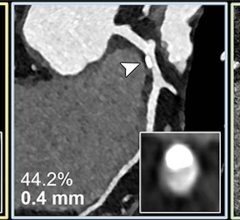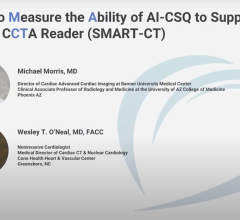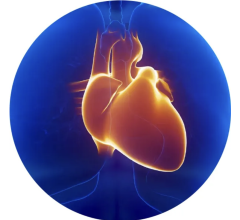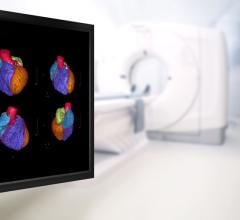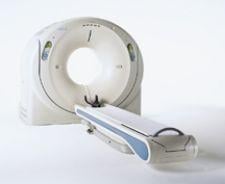
Toshibas Aquilion 64-slice was used in the Core 64 trial, which showed that coronary CTA was accurate in detecting blockages of greater than 50 percent, with a sensitivity of 85 percent and a specificity of 90 percent.
Going into 2009, proponents of coronary CT angiography (CTA) are confident that the scan’s ever-increasing acceptance will lead to it becoming the gold standard in imaging for patients with low or intermediate risk of coronary artery disease. From a business perspective, the CTA remains a driving force in the cardiac CT market.
While coronary MR angiography (MRA) has seen an improvement in image quality, according to clinicians, the scan is not as accepted or used as much as CTA due to image quality.
Inside the Numbers
CTA scans have increased substantially in the past five years, according to many clinicians. In March 2008, IMV Medical Information Division Inc., a market research firm specializing in medical imaging, released a study confirming the data.
According to IMV’s report, there were approximately 4.7 million CTA scans performed in 2007, increasing from 2.2 million scans in 2003. The report found that among sites with CT scanners, 66 percent performed CTA scans in 2007. In 2003, under half (44 percent) of sites with CT scanners performed CTA.
According to a June IMV report, there were approximately 2.5 million MRA scans. Taking the total number of CTA and MRA scans for 2007 (7.2 million), nearly two-thirds were CTA, underscoring the fact that CTA has leaped ahead of MRA.
CTA appears to enjoy the advantage over MRA when imaging the coronary arteries, primarily due to superior spatial resolution. Some clinicians believe that an coronary MRA can be read as effectively as a CTA scan if the cardiologist or radiologist has experience reading both scans.
Core 64 Results
Not all cardiologists believe CTA should be the gold standard for finding and accessing blocked arteries, but last year’s results of the Coronary Artery Evaluation Using 64-Row Multidetector Computed Tomography Angiography trial (CORE-64) trial leant statistical credibility to the scan. The CORE-64 trial — funded by Toshiba America Medical Systems — was conducted by researchers from nine centers in seven countries. The trial studied 291 patients who were scheduled to undergo invasive coronary angiography for suspected or unknown coronary artery disease.
Using Toshiba’s Aquilion 64 CT scanner, the trial found that CTA was accurate in detecting blockages of greater than 50 percent, with a sensitivity of 85 percent and a specificity of 90 percent.
“I was always thought that, even with the 16-row Aquilion we had, MDCTA for the coronary arteries was ready for prime time,” said Melvin E. Clouse, M.D., radiologist at Beth Israel Deaconess Medical Center, professor and vice chairman emeritus, department of radiology, Harvard Medical School. “The first image I ever took with it was one of the best I had ever done. Even if you believed [that 64-slice CTA was an effective scan], I think Core 64 proved it.”
Many clinicians feel the urgency of developing a cardiac test that can better determine who is valuable to having a heart attack.
“For about 200,000 people every year, a fatal heart attack is their first, last and only symptom,” Dr. Clouse said. “So what you want to do is get a simple test.”
Going into 2009, clinicians are optimistic about CTA’s future, in large part to due technological innovations. Siemens’ SOMATOM Definition with dual-source technology has improved temporal resolution and helps better characterize plaque, according to several clinicians who have spoken to Diagnostic & Invasive Cardiology this year. Toshiba’s Aquilion One 320-slice required less contrast, reducing the dose to levels near what would be used in a cath lab, according to clinicians.
“Our goal should be to reduce the number of imaging methods for the heart, if that can be done,” Dr. Clouse said. “MDCT is much more rapid, less complicated, and eventually, I think, we’ll get to perfusion imaging. We’ll be competing actively with MRI. But, we have to do it without so much radiation. We should target our studies where we get our dose rates down to 3 and 5 milliseverts for an angio study.”


 March 20, 2024
March 20, 2024 
